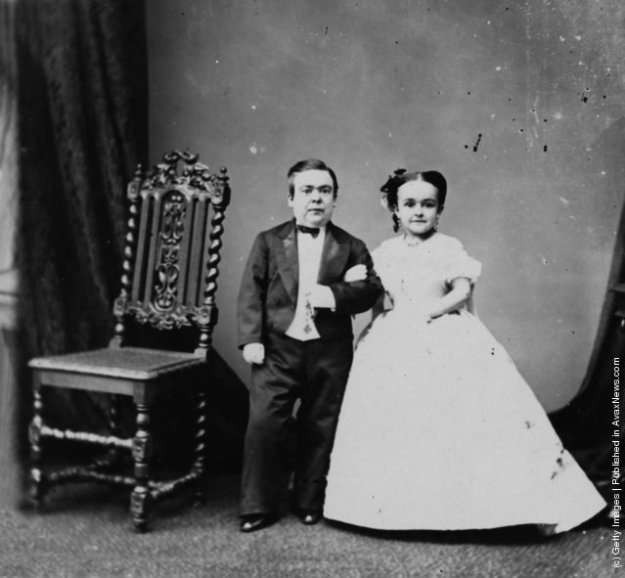Previously published at WGBHNews.org.
President Trump, whose multifarious assaults on basic decency include mocking a disabled reporter in front of a crowd of hooting supporters, may have hit yet another new low. Neomi Rao, Trump’s choice to replace Brett Kavanaugh on the D.C. Circuit Court of Appeals, is an enthusiastic supporter of dwarf-tossing. Rao’s peculiar obsession with the practice of throwing short-statured people against Velcro walls was reported late last week by Stephanie Mencimer in Mother Jones.
As you might imagine, Rao, a veteran right-wing activist currently serving in the Trump administration, does not claim to take part in this humiliating and dangerous practice. Rather, she has argued on several occasions that dwarf-tossing should be a matter of choice, writing that it should be up to the tossee whether picking up a few bucks in some shady barroom is worth the risk to his health and his self-respect.
Rao explained her views several years ago at The Volokh Conspiracy, a libertarian legal blog, in which she criticized a ruling in France against a little person who wanted to take part in dwarf-tossing. Rao wrote that it “demonstrates how a substantive understanding of dignity can be used to coerce individuals by forcing upon them a particular understanding of dignity irrespective of their individual choices.” She added:
The issue is not whether laws prohibiting dwarf throwing, burqa wearing, prostitution, or pornography may be desirable social policy. Rather these examples demonstrate that the conception of dignity used to defend such policies is not that of human agency and freedom of choice, but rather represents a particular moral view of what dignity requires. These laws do not purport to maximize individual freedom, but instead regulate how individuals must behave in order to maintain dignity (and in the case of criminal prohibitions, stay out of jail).
The individual-rights argument may seem appealing. But it ignores all kinds of activities that society has decided to ban or regulate in order to protect not just the person taking part in those activities but also the rest of us — prostitution, as Rao notes, as well as drug use, cockfighting, underage drinking, casino gambling (until recently), practicing medicine without a license, and driving on the wrong side of the street. So it is with dwarf-tossing, which not only puts the person being tossed at risk of injury because of the spinal abnormalities present in most forms of dwarfism but also places others with dwarfism in harm’s way by normalizing a practice that should be considered beyond the pale.
I have skin in this game, though I hardly consider it a game. Our daughter, Rebecca, has achondroplasia, the most common type of dwarfism. My 2003 book, “Little People,” examines the culture and history of the dwarfism. Among the people I interviewed was Doyle Harris, a dispatcher at the University of Louisville and a former official with Little People of America, an organization for dwarfs and their families. As I wrote in the book:
Nearly twenty years ago, he [Harris] and some friends were waiting outside a Louisville nightclub. It was right around the time that dwarf-tossing — an Australian import that rears its ugly head wherever drunk, stupid men in their twenties gather — had first come to the attention of the media. “One of these guys came out — he was a little inebriated — and he went, ‘Oh, they’re going to have dwarf-tossing tonight. Well, let me practice,'” Harris recalled. “And the next thing I know, the guy literally picks me up and throws me out onto the grass. It was not a good situation. It was very demeaning to me. I was in fairly nice clothes, I was looking to go out, and I’m out in the grass, rolling around, getting grass stains and muddy. It was totally against my will.”
Florida, at one time the locus of dwarf-tossing in the United States, banned the practice in 1989. Incredibly, a state legislator proposed lifting the ban in 2011, dredging up the tiresome freedom-of-choice argument. As Angela Van Etten, a lawyer with dwarfism whose work helped lead to the original ban, wrote in The Huffington Post: “Dwarf tossing appeals to a lower instinct in people and creates a hostile environment in which Little People are disrespected and ridiculed. It legitimizes bully behavior.”
Exactly. Yet we now live in an environment in which bullying is not only condoned but indulged in by the president. In that respect, Neomi Rao seems like the perfect Trump appointment. According to Mother Jones, in addition to her fervor for dwarf-tossing, she holds retrograde views on LGBTQ rights and affirmative action and is an anti-regulation zealot. She should not be confirmed. But who will stop her?





 I’ve got an essay
I’ve got an essay I am very excited to announce that my hometown of Middleborough has adopted my book on dwarfism, “Little People,” as its high-school summer-reading book. Students and teachers at
I am very excited to announce that my hometown of Middleborough has adopted my book on dwarfism, “Little People,” as its high-school summer-reading book. Students and teachers at